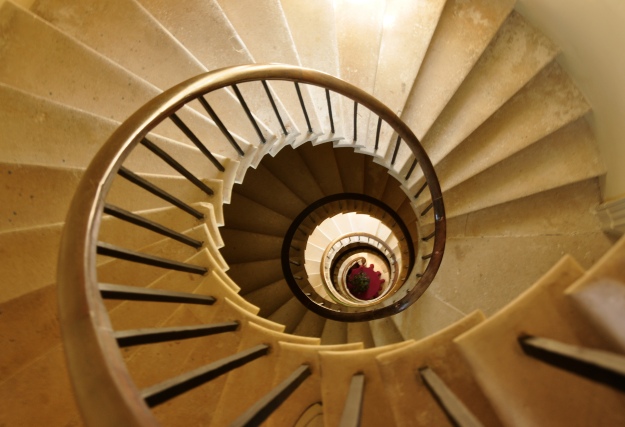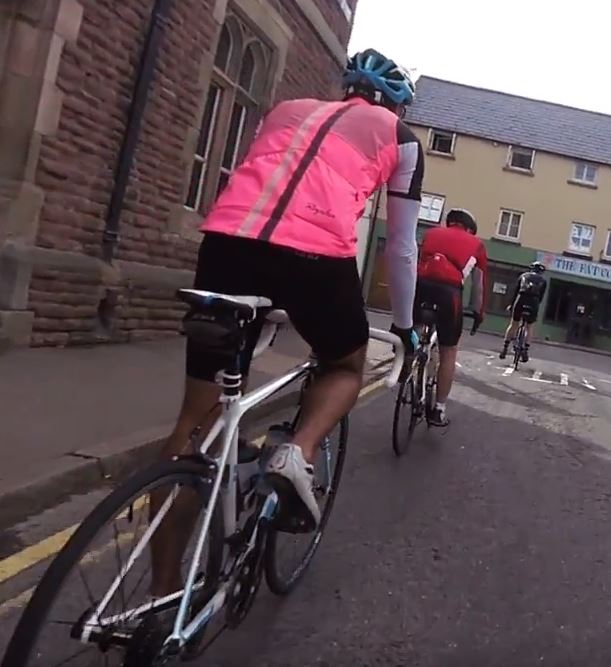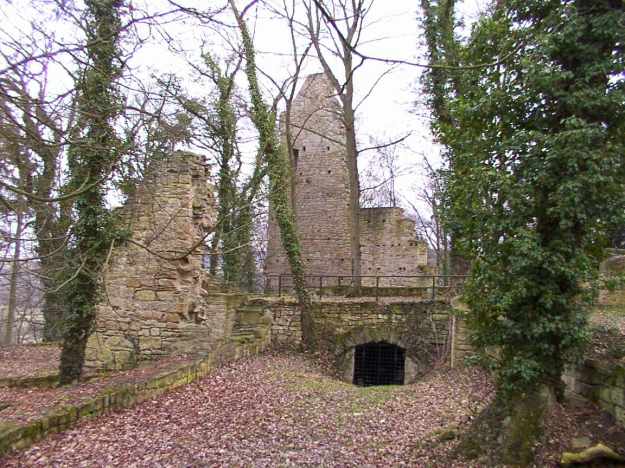Once out of Hereford we headed in the direction of Canon Pyon and Mortimer’s Cross. First lunch was taken in a convenient pub car park. As we set off again after lunch the “Mappa Mundi” was still on my mind. I found great significance in the fact that the map is basically circular in shape, and this got me thinking about the symbolic importance of circular figures in art and religion. St Teresa of Avila, one of my favourite mystics, envisioned her inner world in terms of concentric circles: circular rooms through which she had to consciously pass in order to be joined with God at the centre of her being. Modern churches are often built in the round, and round Rose windows, made up of intricate abstract patterns, are often found in churches and Cathedrals. Carl Jung noted the importance of mandala figures, i.e. round drawings with a central point from which various symbols and abstract figures emanate (Mandala means circle in Sanskrit). The earliest forms of dance are generally circle dances. So, it seems reasonable to conclude that there is something deeply significant for the human psyche tied up in the circular. If you take the circle dance for instance it flows from the outer ring inwards and then back outwards again. Another common movement is for the circle to move in one direction and then turn and move in the other direction. These types of movement are found in the English Folk Dance Tradition in dances like the “Circassian Circle”. It seems to me that people taking pleasure in dancing these circular movements are physically expressing, albeit quite unconsciously, the basic energy flows of the human soul. The painter of mandala or the craftsman who constructs the abstract figures of a rose window in stained glass is reflecting the same reality in visual form, inviting contemplation rather than, as with the dance, participation.
Like all archetypal expressions there is a positive and a negative aspect to all this. It seems to me that the negative is expressed in common sayings like “l just seem to be going around in circles getting nowhere!” There is a life cycle, stages we have to go through merely because we are human beings and that is the way it is, whether we like it or not. Of course, we can consciously or unconsciously resist the inevitable march of time and thereby find ourselves stuck in a kind of psychic time warp. Indeed, going around in circles, so to speak, and getting nowhere. However, it would appear that if this happens, then our unconscious, always seeking to bring our conscious ego in line with reality, will not let us get away with it and seeks, often by inducing some kind of crisis, to balance things up. This can cause all kinds of problems and is fraught with danger, particularly the older we get. If for example some elements of adolescence get repressed and thus unexpressed, they may well emerge in midlife at a time when behaviour, which is perhaps excusable in the earlier period of development, would not be acceptable in someone whom society judges is more mature and should know better. As I rode along, I recalled, with a wry smile, being on a train journey from Mainz to Frankfurt with Julia when we bumped into a middle aged man we knew from the Church of the Resurrection in Mainz who had recently left his wife. He was dressed in tight leather jeans and was sporting an earring. Julia leaned over to me and quietly whispered in my ear, “mid-life crisis”. I also recalled that I have on many occasions sat in my consulting room with a patient who is well dressed and to all appearances is a mature human being, only to realise, when the therapy got underway, that from an emotional point of view I am working not just with a rebellious teenager but perhaps with an enraged toddler or even, more problematic, a pre-linguistic baby.
It seemed to me as I rode along, that in order to come to a good working model for thinking about life and how it works, one has to give credence to the twin realities of circling but at the same time moving forward. In the past I had thought this developmental reality is best summed up by the image of a spiral staircase, where the climber goes around and around but in doing so also ascends purposefully towards the goal of reaching the top of the staircase. But another image, more pertinent to our present journey struck me that afternoon. Emotional, psychological and spiritual progress is rather like riding a bike, your legs go round and round but it is this very cyclical movement that propels me forward to attain the goal, the end of the ride. So, I guess that the way in which God has ordered things for us human beings is to go around and around life’s experiences until we are able to move forward from one stage to another on our journey. If we fail at one stage its rather like cycling in a circle and getting nowhere fast and that, any cyclist will tell you, is not what a bike is for.




